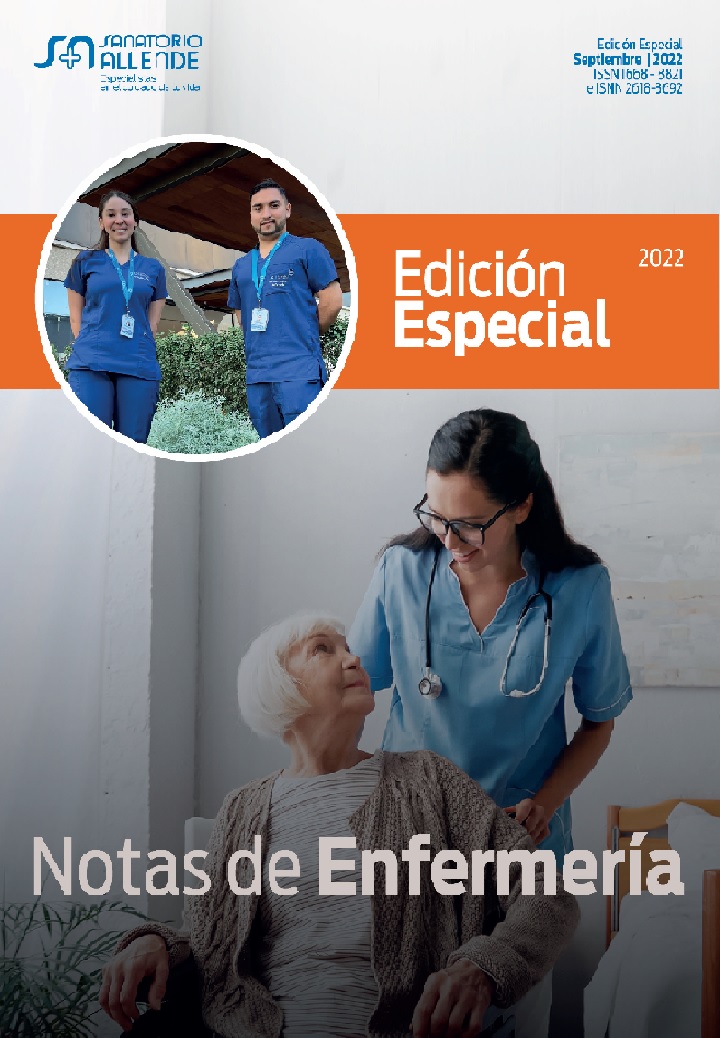Case study: Sedentary older adults in the context of pandemic through telenursing
DOI:
https://doi.org/10.59843/2618-3692.v.n.38792Keywords:
Social Isolation, Telenursing, Aged, Sedentary Behavior, Education, NursingAbstract
Introduction: Low back pain is a common occupational disease in Due to the COVID-19 pandemic, the population was confined under strict regulations and sanitary controls with the objective of reducing contagion, especially among at-risk age groups, mainly the elderly. The confinement, and the few possibilities that the pandemic would cease, brought consequences related to different aspects, especially those related to their health. The lack of possibility for patients to be present for their periodic checkups contributed to worsen their physical, psychological and mental health situation, so new strategies had to be implemented to attend
patients, in order to provide attentive and quality care. One of these strategies corresponds to tele-nursing, which focuses on health
promotion, prevention and education. The present study used this strategy for the care of an older adult belonging to the Vínculos
program, for the subsequent nursing assessment, identification and prioritization of problems. Considering the pandemic context,
the main health problem to be addressed is sedentary lifestyle, which is a risk factor for cardiovascular diseases and an indicator
of quality of life. For this reason, we worked to contribute to the reflection on the contribution of the tele-nursing process and the
development of soft skills, to create new alternative strategies that can be implemented to perform relevant comprehensive care in
older adults in the current COVID-19 context.
Downloads
References
(1) Ministerio de Salud. Estrategia Gradual “Paso a Paso nos cuidamos” [Internet]. gob.cl. 2020.
Disponible en: https://www.gob.cl/coronavirus/pasoapaso/
(2) Núñez J, Díaz A, Jiménez M, García M, Mella L, Romero K. Teleenfermería, opción atractiva para
transformar la gestión del cuidado. RevMedElectrón [Internet]. 2020;42(2):3-4. Disponible en: http://scielo.
sld.cu/scielo.php?script=sci_arttext&pid=S1684-18242020000201759#B5
(3) Palma F. El impacto de la pandemia en la salud y bienestar de las personas mayores: ¿qué medidas
tomar? [Internet]. Universidad de Chile. 2020. Disponible en: https://www.uchile.cl/noticias/165780/elimpacto-
de-la-pandemia-en-el-bienestar-de-las-personas-mayore
(4) Godoy G. Adultos mayores en Chile: ¿Cuántos hay? ¿Dónde viven? ¿Y en qué trabajan? [Internet].
INE. 2020. Disponible en: https://www.ine.cl/prensa/2020/04/15/adultos-mayores-en-chile-cu%C3%A1ntoshay-
d%C3%B3nde-viven-y-en-qu%C3%A9-trabajan
(5) Organización Mundial de la Salud. La COVID-19 y Adultos Mayores [Internet]. 2020. Disponible
en: https://www.paho.org/es/envejecimiento-saludable/covid-19-adultos-mayores
(6) Orkaizagirre Gómara A, Amezcua M, Huércanos Esparza I, Almudena AR. El Estudio de casos, un
instrumento de aprendizaje en la Relación de Cuidado. RevMedElectrón [Internet]. 2014;23(4):2-3. Disponible
en: http://scielo.sld.cu/scielo.php?script=sci_arttext&pid=S1684-18242020000201759&lng=es
(7) SENAMA. Programa Vínculos [Internet]. Ministerio de Desarrollo Social. Disponible en: http://www.
senama.gob.cl/vinculos
(8) Landinez Parra NS, Contreras Valencia K, Castro VillamilII A. Proceso de envejecimiento, ejercicio
y fisioterapia. Rev Cubana Salud Pública [Internet]. 38(4):9-10. Disponible en: http://scielo.sld.cu/scielo.
php?script=sci_arttext&pid=S0864-34662012000400008&lng=es&tlng=es
(9) Brújula Investigación y Estrategia. IX Encuesta de Acceso y Usos de Internet, Subsecretaría de
Telecomunicaciones de Chile [Internet]. 2017. Disponible en: https://www.subtel.gob.cl/wp-content/
uploads/2018/07/Informe_Final_IX_Encuesta_Acceso_y_Usos_Internet_2017.pdf
(10) Todos nos movemos: Campaña contra el sedentarismo[Internet]. Socgeriatria.cl. [citado el 8 de octubre de
2021]. Disponible en: https://www.socgeriatria.cl/site/?p=246
(11) Pontificia Universidad Católica de Chile. Adultos mayores en cuarentena: Cuidado vs. libertad personal
[Internet]. uc.cl. 2020. Disponible en: https://www.uc.cl/noticias/adultos-mayores-en-cuarentena-cuidadovs-
libertad-personal/
(12) Toffoletto MC, Ahumada Tello JD. Teleenfermería en el cuidado, educación y gestión en América Latina
y el Caribe: revisión integrativa. Revista Brasileira de Enfermagem [Internet]. 2020;73(5):5. Disponible en:
https://www.scielo.br/j/reben/a/JbpdXswKGGNtMp4BPfw4WLj/?lang=es#
(13) B, Alcázar, L, Ambrosio. Tele-enfermería en pacientes crónicos: revisión sistemática. Anales Sis
San Navarra [Internet]. 2019;42(2). Disponible en: https://scielo.isciii.es/scielo.php?script=sci_
arttext&pid=S1137-66272019000200007
(14) Organización Panamericana de la Salud. Enfermedades no transmisibles [Internet]. Disponible en:
https://www.paho.org/es/temas/enfermedades-no-transmisibles
(15) Rodríguez S, Cárdenas M, Pacheco AL, Ramírez M, Ferro N, Alvarado E. Reflexión teórica sobre el arte del
cuidado. Enferm univ [Internet]. 2017 [citado el 10 de junio de 2022];14(3):191–8. Disponible en: http://www.
scielo.org.mx/scielo.php?script=sci_arttext&pid=S1665-70632017000300191
Downloads
Published
Issue
Section
License
Copyright (c) 2022 Sanatorio Allende

This work is licensed under a Creative Commons Attribution-NonCommercial 4.0 International License.
Those authors who have published with this journal, accept the following terms:
- Attribution — You must give appropriate credit, provide a link to the license, and indicate if changes were made. You may do so in any reasonable manner, but not in any way that suggests the licensor endorses you or your use.
- NonCommercial — You may not use the material for commercial purposes.

